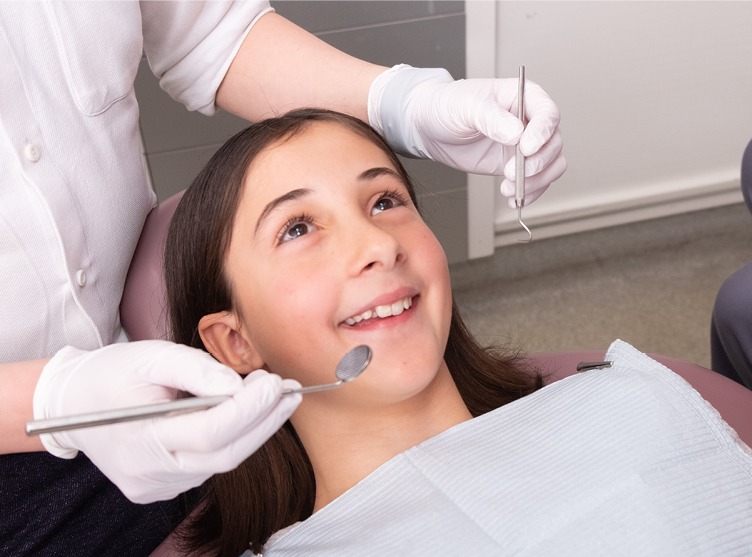A Biased View of Legacy Orthodontics
A Biased View of Legacy Orthodontics
Blog Article
The smart Trick of Legacy Orthodontics That Nobody is Talking About
Table of ContentsThe Definitive Guide to Legacy Orthodontics8 Easy Facts About Legacy Orthodontics DescribedNot known Factual Statements About Legacy Orthodontics See This Report on Legacy OrthodonticsAll About Legacy Orthodontics
In addition, we use flexible treatment schedules, adaptable payment alternatives and a fun, satisfying experience.An orthodontist is a dental expert trained to diagnose, prevent, and treat teeth and jaw abnormalities. They deal with existing conditions and are educated to identify issues that might develop in the future. Orthodontists collaborate with individuals of every ages, from youngsters to grownups. Individuals often connect a best smile with health.
Malocclusion, or misaligned teeth, can lead to oral issues, including tooth degeneration, periodontal condition, and difficult or unpleasant eating. Yet not everyone is born with straight teeth. If you have a bad bite or large rooms between your teeth, you may wish to get in touch with a dental practitioner focusing on orthodontic care.
Top Guidelines Of Legacy Orthodontics
( Picture Debt: DigitalVision/Getty Images) Orthodontists make use of fixed and detachable dental tools, like braces, retainers, and bands, to alter the position of teeth in your mouth. Orthodontic treatment is for dental problems, consisting of: Jagged teethBite problems, like an overbite or an underbiteCrowded teeth or teeth that are also far apartJaw misalignmentThe goal of orthodontic treatment is to improve your bite.
A healthy and balanced bite guarantees you can consume, chew, and talk effectively. While you may think of orthodontists as mainly for children or teens who need braces, they can deal with dental issues at any type of age. Orthodontists participate in university, dental institution, and orthodontic school. After college graduation, they invest 2 or 3 years in an orthodontic residency program.
All orthodontists are dental practitioners, yet not all dental professionals are orthodontists. Orthodontic residency programs offer intensive, focused guideline for oral professionals. They concentrate on 2 areas: Exactly how to correctly and safely move teeth Just how to properly direct advancement in the teeth, jaw, and faceOnce an orthodontist has completed training, they have the choice to become board certified.
The 6-Second Trick For Legacy Orthodontics
Malocclusion leads to tooth congestion, an askew jaw, or irregular bite patterns. Malocclusion is typically treated with: Your orthodontist affixes metal, ceramic, or plastic square bonds to your teeth.
Some people require a headgear to help relocate teeth into line with stress from outside the mouth. A retainer is a personalized device that keeps your teeth in place.
They can create added space in the mouth without having to draw teeth. Orthodontists make use of wires, surgical screws, or plates to support your jaw bone.
You might need to see an orthodontist if you have: Crowding or not sufficient room for every one of your teethOverbite, when your upper teeth come by your base teethUnderbite, when your bottom teeth are too far forwardSpacing or problems with gapsCrossbite, which is when your top teeth fit behind your base teeth when your mouth is closedOpen bite or a vertical gap in between your front base and top teethMisplaced midline, when the facility of your base and top teeth do not line up Remedying a dental malocclusion can: Make attacking, eating, and talking easierImprove the balance of our face and your general appearanceEase pain from temporomandibular joint conditionsSeparate your teeth and make them easier to clean up, assisting stop dental caries or dental caries It's often a dental practitioner who first notices misaligned teeth during a regular exam.
The Main Principles Of Legacy Orthodontics

During your initial orthodontic appointment, you'll likely have: A dental examPhotos taken of your face and smileDental X-raysPanoramic (360 level) X-rays of your face and headImpressions to produce mold and mildews of your teethThese tests will certainly aid your orthodontist understand just how to wage your treatment. leesburg clear braces. An orthodontist is a dental professional who's had training to treat your teeth and jaw
Orthodontists may perform surgical treatment, exams,X-rays,and even more to help you attain a more comfortable, much healthier smile. An orthodontist is concentrated on your bite, so something like a chipped tooth would certainly be managed by a dental expert. Orthodontists are dentists however not all dentists are orthodontists. Orthodontists are concentrated on your bite, or the way your teeth fit with each other, and the straightness of your teeth.
Ever questioned how celebs constantly appear to have completely aligned teeth? The response commonly hinges on the competent hands of an orthodontist. However just what does an orthodontist do? Orthodontists are dental experts who concentrate on fixing irregularities in the teeth and jaws. Their knowledge exceeds just producing a lovely smile; it reaches improving your general oral health and feature.
The 5-Second Trick For Legacy Orthodontics

While dental braces are one of the most typically identified orthodontic therapy, orthodontists have a diverse toolkit at their disposal. The details method chosen depends on the extent of the case, the client's age, and individual preferences. These reliable dental braces make use of view publisher site a system of brackets bonded to the teeth and connected by cables.
These removable trays are personalized to gradually shift the teeth's setting. In situations of narrow jaws, palatal expanders can be made use of to produce area for proper tooth positioning.
Report this page